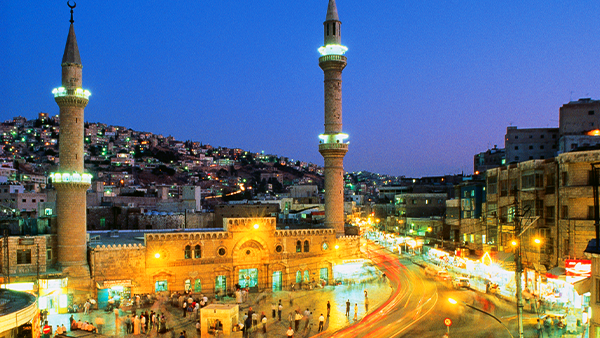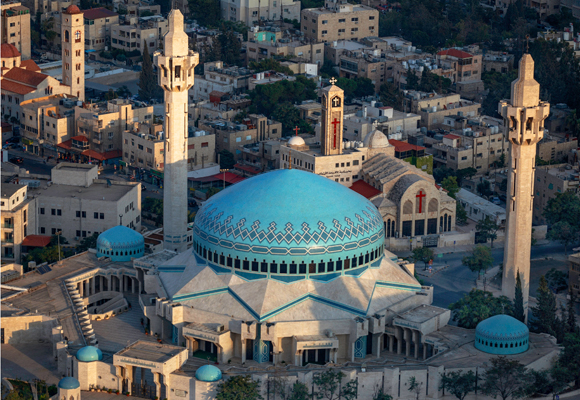King Hussein Bin Talal Mosque
The King Hussein Bin Talal Mosque, named after the late King, is the largest mosque in the Kingdom. Its architecture reflects the Umayyad style prevalent in several sites in Jordan.


Grand Husseini Mosque
The mosque was built by the late King Abdullah I in 1924 on the site of a much older mosque. It’s conveniently located downtown near the traditional souqs and street food vendors.
King Abdullah I Mosque
Built as a memorial by the Late King Hussein to his grandfather, the unmistakable blue-domed mosque can host up to 7000 worshippers inside and another 3000 in the courtyard area.


The cave of the seven sleepers
Mentioned in the Holy Qur’an in Surat Al-Kahf (the Cave), the cave of the sleepers is a historic religious site of great importance in Jordan, located outside Rajib Village in East Amman.
The sleepers involve Christian boys who were persecuted by the Roman Emperor Trajan and then escaped to a cave, where they had slept for 309 years.Today, the tombs of the men are still visible inside the cave, where you can peep inside the tombs to see the skeletal remains of the sleepers and their dog. The cave is also surrounded by Byzantine and Roman ruins as well as a mosque – exactly as described in the Holy Qur’an.

